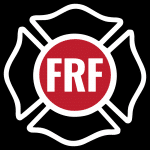10 Simple Rules for Firefighter Fat Loss….(2016 Edition)
Would you agree that a leaner athlete is a better athlete? I know this is a “loaded” question. A lot of the answer has to deal with the sport in which the athlete is participating. One thing that research shows is that a leaner athlete is a “more efficient” athlete. When it comes to firefighters, this is a valid finding.  Efficiency in general terms, describes the extent to which time, effort or cost is well used for the intended task or purpose. So, a more efficient Fire Rescue Athlete will be able to do more work with less physical effort. This is especially important since most of our “more intense” work as Fire Rescue Athletes comes when breathing air via an SCBA.
Efficiency in general terms, describes the extent to which time, effort or cost is well used for the intended task or purpose. So, a more efficient Fire Rescue Athlete will be able to do more work with less physical effort. This is especially important since most of our “more intense” work as Fire Rescue Athletes comes when breathing air via an SCBA.
2. Follow a consistent and effective EXERCISE program! Yes, you can lose weight and fat just by changing your eating habits. Fire Rescue Athletes need to be ready for any situation, a well planned fitness program is essential. But, very few fitness programs prepare Fire Rescue Athletes to be “fit for duty” and help decimate fat…..until now. Click HERE to Check out the FRF Ultimate Fire Rescue Workout Program. Also, check out these programs (Click HERE) that will get you in the shape of your life.
3. Eat low-glycemic carbohydrates such as vegetables, whole-wheat products and oatmeal instead of refined processed carbohydrates which usually come in a box or a bag.
4. Eat some type of lean protein at each meal. Protein helps to satisfy hunger and provide the necessary building blocks to maintain lean body mass while losing body fat.
5. Eat 4-6 small meals day a day instead of the usual 2-3 large meals. Eating frequently will help regulate and boost your metabolism to burn more calories.
6. Remember fat is not bad. Consume adequate amounts of healthy fat foods such as olive oil, walnuts, almonds, Omega-3 fortified eggs, or other Omega-3 products. Healthy fats are great antioxidants as well as help with brain function and many other essential processes that take place in the body on a daily basis. Essential Fatty Acids, according to clinical studies, could also help prevent certain diseases. To guarantee you’re consuming enough Omega-3 supplement your diet with Omega 3.
7. Consume Green Tea or Water instead of calorie-filled drinks such as soft drinks. Green Tea has many health benefits and you should be drinking at least 1ml of non-caffeinated fluid for every calorie that you consume. This works out between (8-12) 8oz glasses of Green Tea or Water a day.
8. Consistent fat loss requires good habits. If you want to create good habits, then you need plan. Therefore, map out your meals every day and follow them. If you follow your plan everyday for 2-3 weeks, you will form habits that become part of your daily routine and part of your life.
9. Incorporate “superfoods” into your meal plan on a daily basis. Some examples are salmon, low-fat plain yogurt, tomatoes, spinach, mixed berries, whole oats, mixed nuts, olive oil, flax seeds(or flax meal), green tea, and various beans.
10. Avoid ADDED Sugar. Look for sugar in the ingredients and not just the nutrition facts. Sugar occurs naturally in many foods and is healthy for the body. The goal of reading the label is to make sure sugar is not an added ingredient. If it is not added then do not worry about the natural sugar on the fact list. As far as how much sugar can you have in a day? The World Health Organization suggests that no more than 10 percent of your daily calories come from added sugar, so that’s a good dietary goal. By reading labels you can figure out the number of calories you eat each day and how much sugar.
and not just the nutrition facts. Sugar occurs naturally in many foods and is healthy for the body. The goal of reading the label is to make sure sugar is not an added ingredient. If it is not added then do not worry about the natural sugar on the fact list. As far as how much sugar can you have in a day? The World Health Organization suggests that no more than 10 percent of your daily calories come from added sugar, so that’s a good dietary goal. By reading labels you can figure out the number of calories you eat each day and how much sugar.



